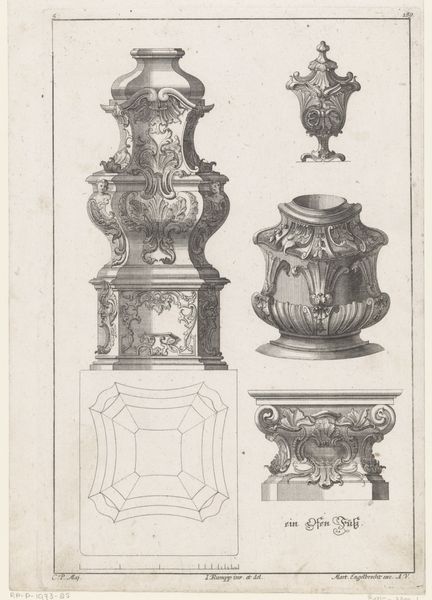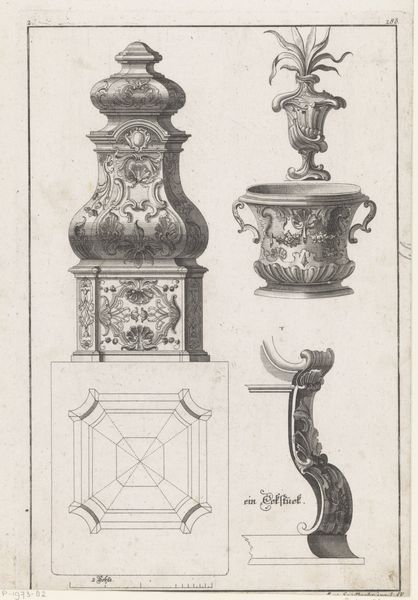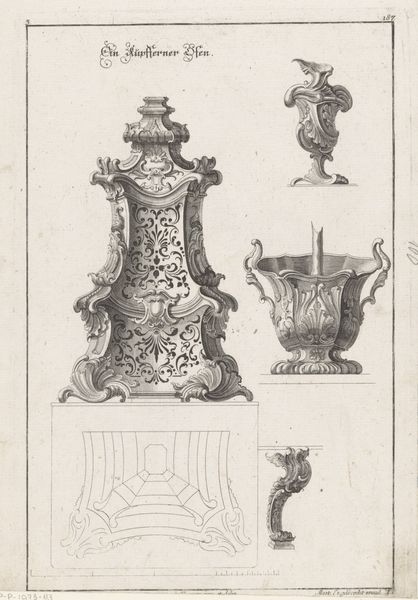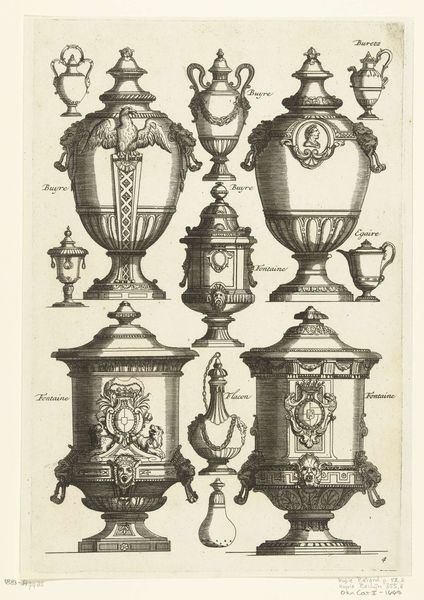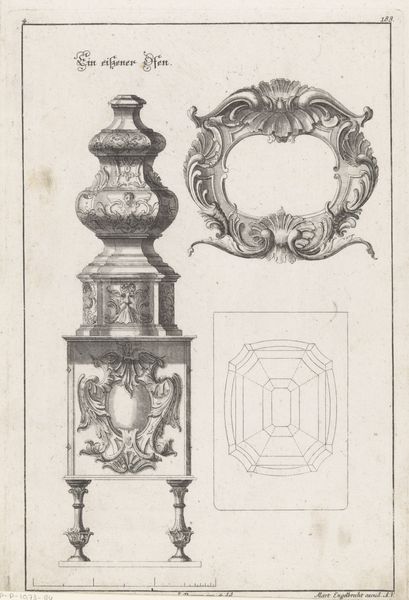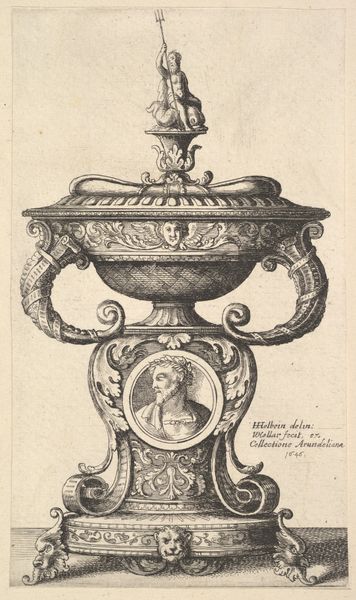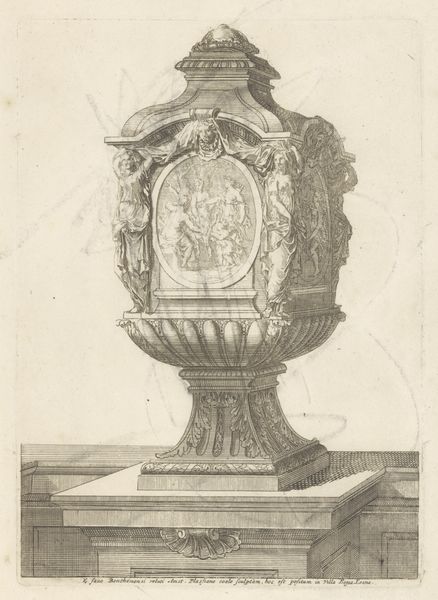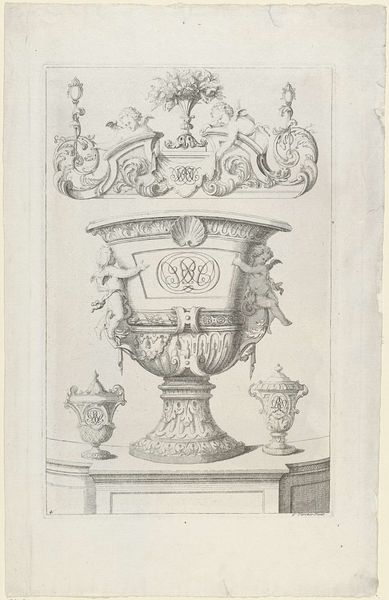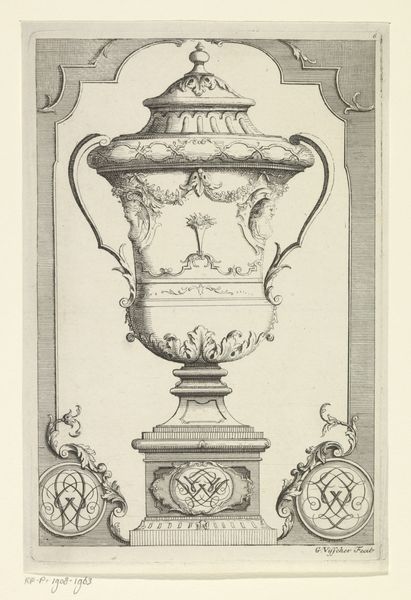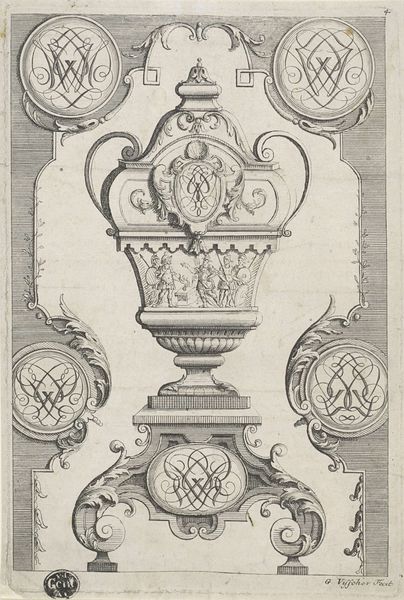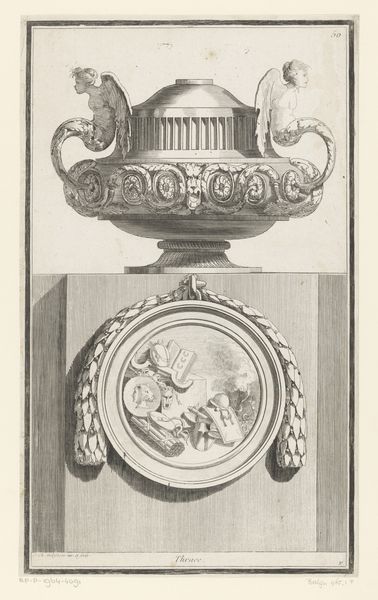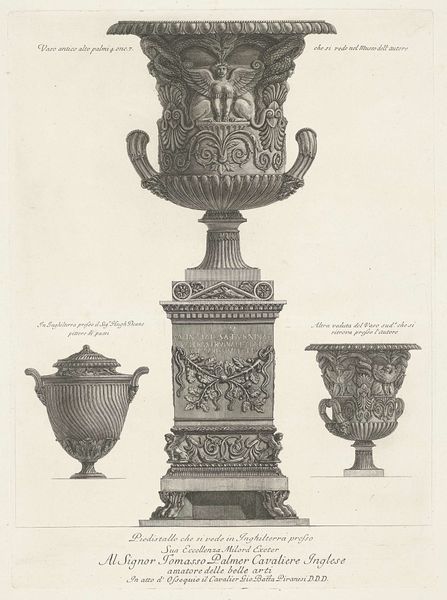
drawing, print, paper, engraving
#
drawing
#
baroque
# print
#
vase
#
paper
#
engraving
Dimensions: height 296 mm, width 194 mm
Copyright: Rijks Museum: Open Domain
This print was made by Johann Rumpp, a silversmith in Augsburg, Germany, sometime in the first half of the 18th century. It shows designs for luxury objects – a vase, a pot, and a pedestal – all rendered with elaborate, swirling ornamentation. What is the public role of this art? Well, this wasn't intended as an artwork in the modern sense. It was a commercial pattern-book, meant to be circulated amongst other artisans and wealthy patrons. Printed design like this played a crucial role in the development of the luxury market in Europe, helping to spread new styles and tastes. The image creates meaning through a visual language that is self-consciously opulent. The cultural reference is to the aristocratic Baroque style that dominated the period. Does this artwork comment on the social structures of its time? It certainly reflects the hierarchical society of its day, catering to the desires of the wealthy elite. To fully understand this print, we might consult trade directories, guild records, and examples of surviving silverwork. By placing it in its original context, we can gain a deeper understanding of the social conditions that shaped artistic production in 18th century Germany.
Comments
No comments
Be the first to comment and join the conversation on the ultimate creative platform.
